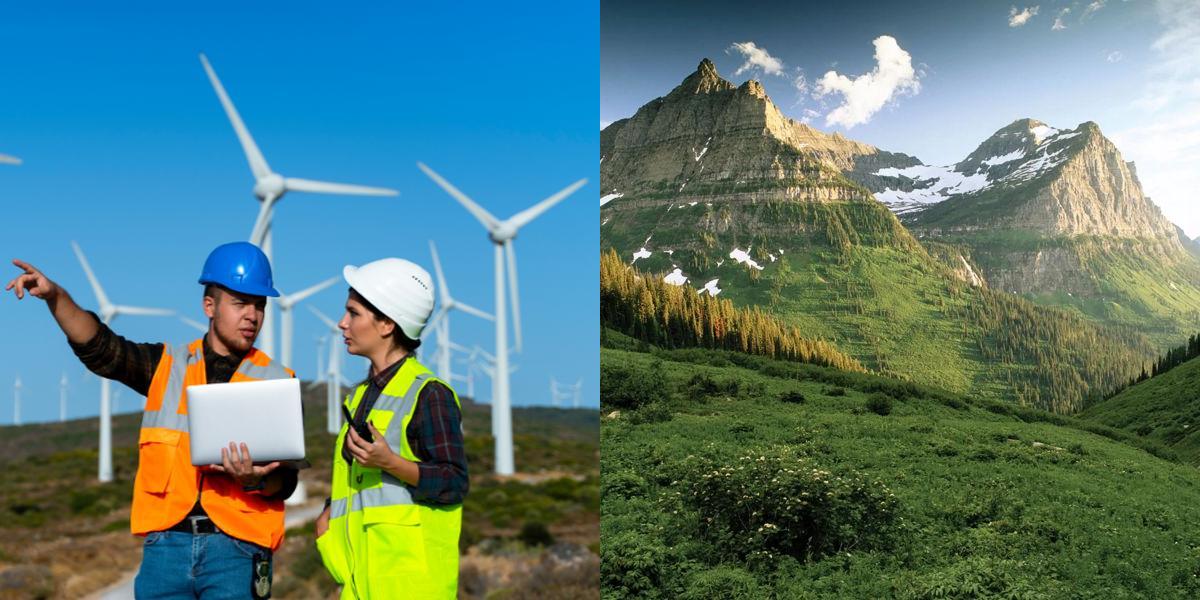How to Become a Wind Turbine Technician in Montana

What is a Wind Turbine Technician?
A wind turbine technician, also known as a windtech, is a professional responsible for the installation, maintenance, and repair of wind turbines. Their main goal is to ensure that these renewable energy sources are functioning properly and efficiently.
Some of the key responsibilities of a wind turbine technician include:
- Inspecting and troubleshooting wind turbine components
- Conducting routine maintenance tasks, such as lubrication and cleaning
- Repairing or replacing malfunctioning parts
- Performing tests and inspections to ensure safety and performance
- Keeping detailed records of maintenance and repairs
How do I get a job as a Wind Turbine Technician?
Once you have obtained your Wind Turbine Technician certification, the next step is to find a job in the field. Here are some tips to help you get started on your job search:
-
Update Your Resume: Before you start applying for jobs, make sure your resume is up to date and tailored to the position you are applying for. Highlight your certification, education, hands-on experience, and any relevant skills or qualifications that make you a strong candidate for the job.
-
Network: Networking is an essential part of any job search. Reach out to industry professionals, attend job fairs, and join online communities or forums related to wind energy. Building connections can lead to job opportunities and provide valuable insights into the industry.
-
Apply for Entry-Level Positions: As a new Wind Turbine Technician, it's common to start with entry-level positions. These roles may involve assisting experienced technicians, conducting routine maintenance tasks, or performing inspections. While these positions may not be as glamorous as working on complex repairs or installations, they provide valuable experience and an opportunity to learn from seasoned professionals.
-
Consider Internships or Apprenticeships: Internships or apprenticeships can be an excellent way to gain practical experience and make valuable industry connections. These positions often provide hands-on training and mentorship opportunities, which can further enhance your skills and increase your chances of getting hired for a full-time position.
-
Research Employers: Take the time to research potential employers in the wind energy industry. Identify companies that align with your career goals and values. Look for job openings on their websites or inquire about any upcoming opportunities. Additionally, consider reaching out to local wind farms or energy companies to inquire about job openings or potential future positions.
-
Stay Updated and Flexible: Wind energy is a growing industry, and job opportunities may vary depending on the location and market demand. Stay updated with industry trends and be open to relocation if necessary. Being flexible and adaptable can increase your chances of finding job opportunities in the field.
Career Paths and Opportunities after Becoming a Wind Turbine Technician
Becoming a certified Wind Turbine Technician can open up various career paths and opportunities within the wind energy industry. Here are a few potential career paths you can explore:
-
Wind Farm Technician: Many Wind Turbine Technicians work directly for wind farm operators. In this role, you would be responsible for maintaining, repairing, and troubleshooting wind turbines on a regular basis. This includes conducting routine inspections, identifying and fixing mechanical or electrical issues, and ensuring that the turbines are operating safely and efficiently.
-
Service Technician: Some Wind Turbine Technicians work for wind turbine manufacturers or service providers. In this role, you would be responsible for installing new turbines, performing warranty repairs, and providing ongoing maintenance and support to clients. This role may involve traveling to different locations to service wind turbines.
-
Technical Sales Representative: If you have strong communication and sales skills, you may consider a career as a technical sales representative for a wind energy company. In this role, you would be responsible for promoting and selling wind turbine systems or services to potential clients. This may involve conducting product demonstrations, providing technical support, and negotiating contracts.
-
Supervisor or Manager: With experience and additional training, you can progress to a supervisory or managerial role within the wind energy industry. In these positions, you would be responsible for overseeing a team of Wind Turbine Technicians, managing projects, and ensuring that operations are running smoothly. These roles often involve a combination of technical expertise and leadership skills.
-
Consultant or Trainer: If you have extensive experience and knowledge in wind turbine technology, you may consider a career as a consultant or trainer. Consultants provide expert advice and guidance to companies or organizations looking to invest in wind energy projects. Trainers, on the other hand, deliver training programs and workshops to aspiring Wind Turbine Technicians or industry professionals.
How much does a Wind Turbine Technician make?
The average salary for wind turbine technicians varies depending on factors such as experience, location, and the specific industry they work in. According to the Bureau of Labor Statistics (BLS), the median annual wage for wind turbine technicians was $56,230 in May 2020. The lowest 10 percent earned less than $40,160, while the highest 10 percent earned more than $82,980.
It's important to note that these figures represent the median salary, meaning that half of the wind turbine technicians in the industry earn more than this amount, and half earn less. Entry-level wind turbine technicians can expect to start at the lower end of the salary range and gradually increase their earnings with experience and additional training.
How much does a Wind Turbine Technician make?
The average salary for wind turbine technicians varies depending on factors such as experience, location, and the specific industry they work in. According to the Bureau of Labor Statistics (BLS), the median annual wage for wind turbine technicians was $56,230 in May 2020. The lowest 10 percent earned less than $40,160, while the highest 10 percent earned more than $82,980.
It's important to note that these figures represent the median salary, meaning that half of the wind turbine technicians in the industry earn more than this amount, and half earn less. Entry-level wind turbine technicians can expect to start at the lower end of the salary range and gradually increase their earnings with experience and additional training.
Final Thoughts
Becoming a certified Wind Turbine Technician can be a rewarding career choice, especially in today's growing renewable energy industry. By following the steps outlined in this guide, you can obtain the necessary certification, gain hands-on experience, and increase your chances of finding a job in the field. Remember to stay updated with industry trends, network with professionals, and be open to different career paths and opportunities. With dedication and a passion for renewable energy, you can build a successful career as a Wind Turbine Technician.
If you're considering a career shift or curious about different professional paths, Dreambound has written many guides to help you in making informed decisions. Here are a few:

Sunshine is a member of the School Growth team at Dreambound, where she assists students and schools with their billing and onboarding needs. She is a licensed mechanical engineer. Outside of work, she enjoys road trips with her family, discovering cozy cafes, and exploring her love for art.




